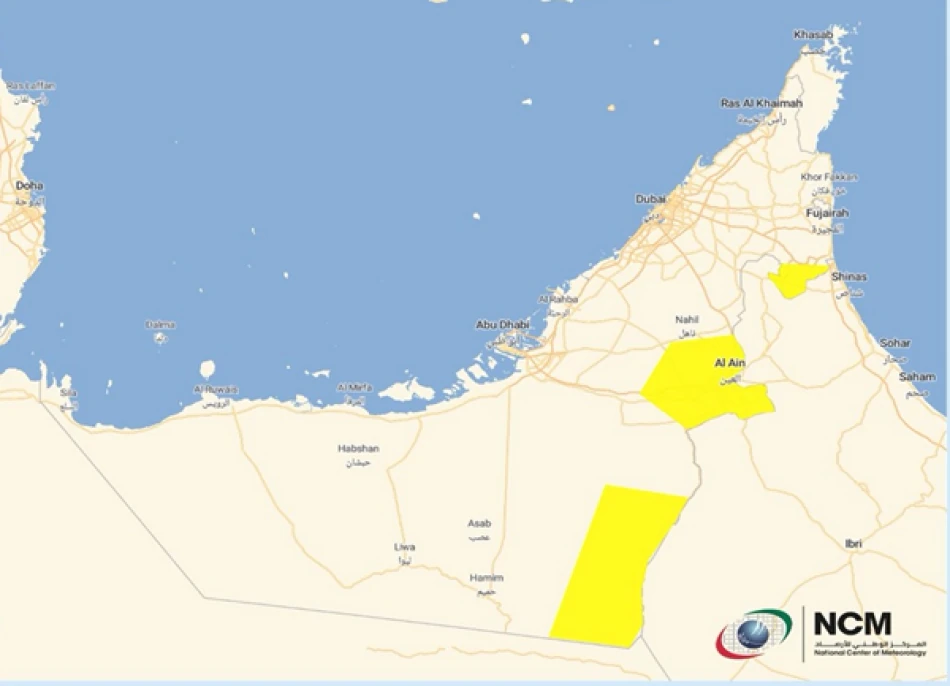
National Weather Center Issues Weather Alert: Preparing for Potential Weather Conditions
UAE Braces for Severe Weather as Thunderstorms and Dust Storms Target Eastern Regions
The UAE's National Center of Meteorology has issued weather warnings for Sunday afternoon, forecasting powerful thunderstorms accompanied by heavy rainfall and strong winds reaching up to 45 km/h across eastern and southern regions. The severe weather system, expected to trigger dust storms and significantly reduce visibility, highlights the country's ongoing vulnerability to extreme weather events during transitional seasons.
Six-Hour Weather Window Poses Multiple Hazards
The meteorological alert covers a critical six-hour period from 1:30 PM to 7:30 PM on Sunday, coinciding with peak daytime activity when roads and outdoor work sites experience maximum traffic. The combination of cumulonimbus cloud formation, intense rainfall, and dust-generating winds creates a particularly dangerous scenario for transportation and construction sectors that form the backbone of the UAE's economy.
Wind speeds reaching 45 km/h may seem moderate compared to hurricane-force conditions, but in the UAE's arid environment, such velocities are sufficient to mobilize vast quantities of sand and dust, creating hazardous driving conditions and potential respiratory health concerns for residents.
Regional Weather Patterns Reflect Broader Climate Volatility
Seasonal Transition Intensifies Storm Activity
This weather system aligns with typical patterns during the UAE's transitional seasons, when temperature differentials between land and sea create unstable atmospheric conditions. The eastern and southern regions, including areas near the Hajar Mountains and borders with Oman and Saudi Arabia, frequently experience more intense weather due to orographic lifting effects where mountains force air masses upward, triggering cloud formation and precipitation.
Infrastructure and Economic Implications
The timing of severe weather events carries significant economic implications for the UAE's diversified economy. Construction projects, outdoor events, and aviation operations—critical components of Dubai and Abu Dhabi's business ecosystems—face potential disruptions during such weather windows. The country's substantial investments in weather monitoring and early warning systems reflect recognition of these economic vulnerabilities.
For the logistics sector, which has positioned the UAE as a global shipping and aviation hub, accurate weather forecasting enables proactive scheduling adjustments that minimize costly delays and safety risks.
Public Safety and Preparedness Measures
The National Center of Meteorology's use of social media platforms like X (formerly Twitter) for weather alerts demonstrates the UAE's commitment to real-time public communication during severe weather events. This approach mirrors best practices adopted by meteorological services in other Gulf states and reflects lessons learned from past weather-related incidents in the region.
Residents in affected areas should anticipate potential power outages, flooding in low-lying areas, and hazardous driving conditions. The combination of reduced visibility from dust and slippery roads from rainfall creates particularly challenging conditions for the UAE's extensive expatriate population, many of whom may be less familiar with desert storm driving techniques.
 Layla Al Mansoori
Layla Al Mansoori







